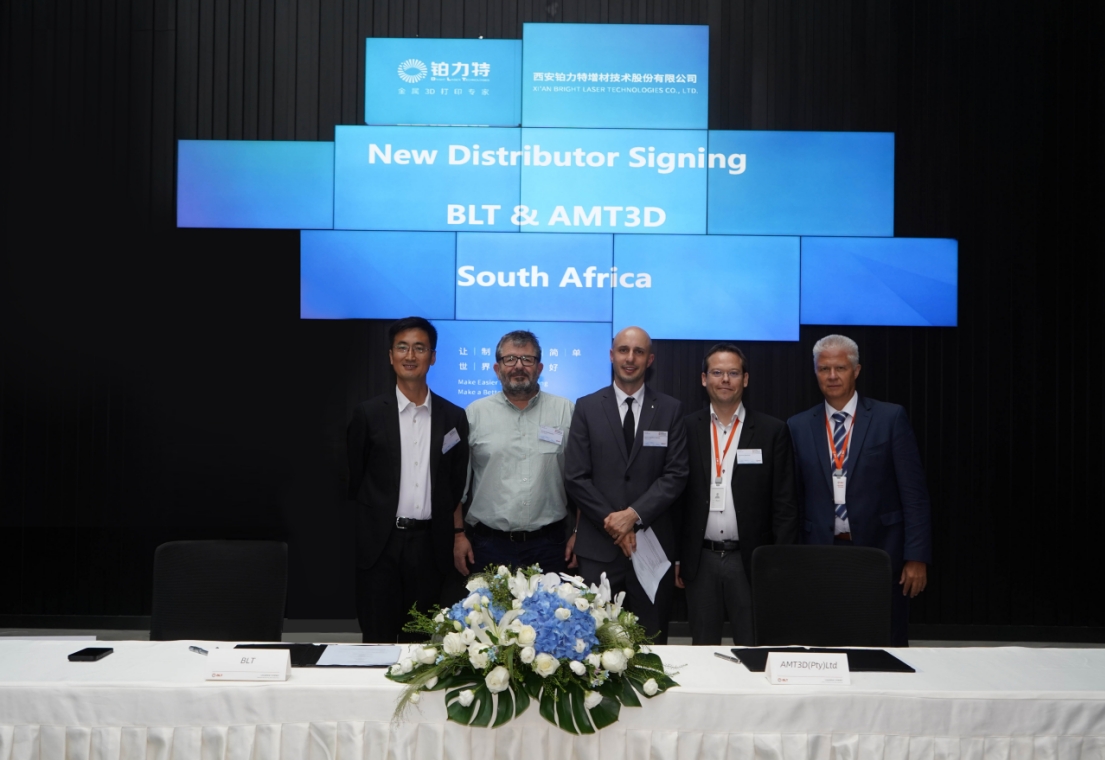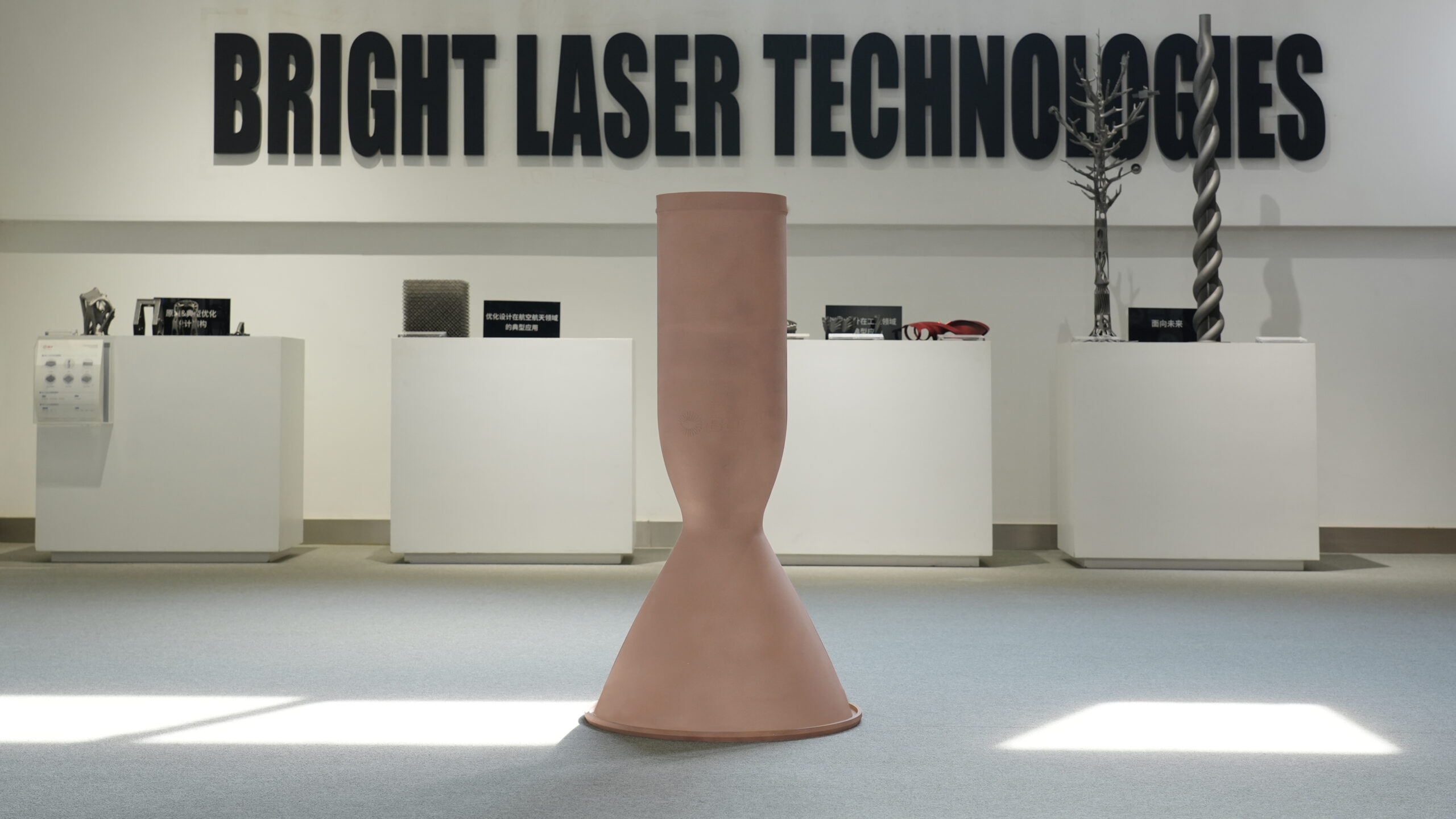As humanoid robotics and embodied intelligence technologies rapidly advance toward industrial-scale deployment, high-performance force sensing plays a critical role in enabling compliant control, precise manipulation, and robust mobility over complex terrains. Six-axis force sensors have become essential components for safe and adaptive human-robot interaction.
Since 2024, Haptron Scientific and Bright Laser Technologies (BLT) have collaborated to develop a comprehensive sensor suite. By utilizing BLT’s metal 3D printing technology, Haptron Scientific break traditional manufacturing limits, enabling complex miniaturized designs with fewer parts and simpler assembly. This innovation supports scalable production while delivering precise, durable, and lightweight force sensors for next-gen humanoid robots—enabling safer, more dexterous, and versatile robotic platforms.
Photon Finger: World’s Smallest Six-Axis Force Sensor
The finger joints of humanoid robots demand sensors that are not only miniaturized and high-performing but also engineered for seamless integration. To address the limitations of traditional machining—such as high cost, long lead times, and low yield—Haptron Scientific developed the world’s smallest six-axis force sensor, the Photon Finger, using its proprietary optical multimodal sensing technology.
Leveraging BLT’s PBF-LB/M BLT-A100 machine and high-performance 18Ni350 maraging steel powder, the Photon Finger was structurally optimized for integrated and consolidated manufacturing via one-piece metal 3D printing. This approach enabled a miniaturized design ideal for tight finger joint integration, a batch production cycle of just 20 minutes with 15–30 units printed simultaneously, and significant performance enhancements—including a 50–250% improvement in force range and overload tolerance. The sensor also delivers improved signal integrity, reduced power consumption, and faster communication, making it well-suited for rapid system integration and iteration.
Now established as a new industry benchmark in compact force sensing, the Photon Finger provides humanoid robots with advanced capabilities in grasp control, material compliance detection, and other delicate manipulation tasks.

PhotonR40: Industry’s First Six-Axis Wrist Sensor with Central Through-Hole Design
In December 2024, Haptron Scientific launched the PhotonR40—a high-performance six-axis force sensor with a central through-hole structure—specifically designed to simplify force sensing integration in humanoid robot wrists.
BLT supported the mass production of the PhotonR40’s core structure using lightweight materials, achieving a 20–30% reduction in weight while improving overall sensor performance. This, in turn, enhances the robot’s stability and balance. In addition, BLT’s metal 3D printing technology enabled the one-piece fabrication of complex internal geometries, reducing assembly complexity and significantly increasing production efficiency.

Ankle Joint Sensor: Built for High-Strength, Dynamic Applications
The ankle-joint six-axis force sensor is a critical component designed to measure forces and torques during walking, standing, and other human-like motions. The sensor must exhibit exceptional strength, high overload capacity, and long-term reliability. By leveraging BLT’s advanced metal 3D printing technology and high-strength, cost-effective steel materials, this sensor—developed by Haptron Scientific—has achieved a significant breakthrough in performance, including an increased load capacity of 8000N / 500N·m, a yield strength of 2400 MPa for greatly improved deformation resistance, and an overload capacity enhanced to 300%, substantially boosting overall reliability.
Latest Breakthrough – Photon Finger Max: 700N Load Capacity for Wider Industrial Use
The second-generation optical-based multi-axis force sensor, featuring a compact 9.5 mm diameter form factor, is engineered for seamless integration into robotic fingertips and end-effectors. Leveraging BLT’s high-resolution BLT-A160 PBF-LB/M machine and 18Ni300 maraging steel powder, the sensor’s elastic structures have been topology-optimized for superior mechanical performance, achieving a 23× increase in load capacity—up to 700 N—over the previous generation. The sensor passed high-frequency, high-load testing, while the refined assembly interfaces streamline integration and accelerate iterative development for robotic applications. The expanded measurement range enables the sensor to meet a broader spectrum of application scenarios.

Throughout the collaboration, metal additive manufacturing proved to be highly adaptable and industrially scalable. It offered substantial design flexibility, enabling the production of complex geometries featuring internal channels and fine details. The technology also accelerated delivery timelines by shortening production cycles and improving batch manufacturing efficiency. It delivered consistent performance with reliable and repeatable mechanical properties. By reducing material waste and simplifying processing steps, it provided a more cost-efficient solution overall. These capabilities establish AM as a powerful enabler for the evolving needs of the robotics industry, from prototyping to mass production. Looking ahead, BLT and Haptron Scientific will continue to explore cutting-edge applications in robotics, additive manufacturing, and new materials—accelerating the path toward smarter, more autonomous manufacturing



-scaled.jpg)